Get Ready for a Raw Milk Cheese Culinary Adventure!
We at Rogers Collection are really excited to offer an incredibly delicious and well-varied selection of raw milk cheeses. Eleven, to be exact! From delicate to robust, from subtle to intensely aromatic, from creamy to firm, these handcrafted cheeses will make your heart sing!
Raw milk cheeses have been an integral part of traditional diets over many parts of the world for a very long time. Raw milk lends deep, full flavors to cheeses and you can taste that quality in the raw milk cheeses offered in our collection. All these amazing cheeses are aged a minimum of 60 days (as required), and some are aged as much as 24-48 months, allowing the flavors to mature even further. These unpasteurized offerings are made from fresh milk in its natural state. And what does that mean? Delicious, unprocessed, healthy cheeses loaded with lots of good bacteria and enzymes and, of course, flavor!
Now, let’s get to those cheeses!
Ok, wait, maybe not quite yet. Again, there are eleven knock-out cheeses in our catalog. I’ll describe the history and characteristics of a handful of those cheeses, but here is a link to our full offerings.
So, Spain and Italy are clearly known for producing stellar cheeses and this rings true, too, in the case of raw milk cheeses. All of our raw milk cheeses hail from various regions of those two countries. So let’s get started with some Spanish cheeses!
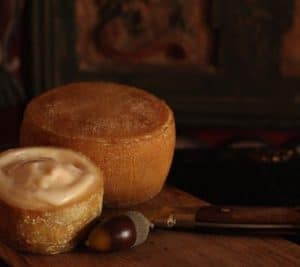
The exceptional raw sheep’s milk cheese Finca Pascualete Retorta won the 2017 Gold Award, Best Cheese in Spain Award and World Cheese Awards. That’s a lot of awards–and it deserves every one! This cheese is made from pure raw milk from its own flock of Extremadura Merino sheep. The handcrafted Retorta is made with milk, salt and vegetable rennet. Vegetable rennet is obtained by making a solution from the cardoon flower–a plant that grows wild throughout the Finca estate.
This unique process gives the cheese its distinctive creamy texture. And the flavor? Delicate yet distinctive and persistent on the palate. It holds hints of the blue wild flower pistils used in the curdling. The Retorta is aged 60-75 days.
Next up, is another Spanish cheese, this time from the Navarra region.
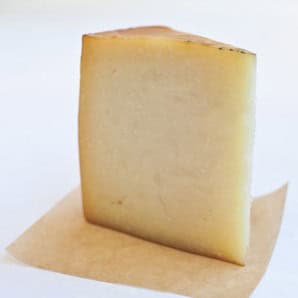
Alain Idiazabal DOP is made from milk sourced from several local Latxa sheep herds native to the Basque Country. Crafted with exclusively local ingredients, the producer Juan Miguel Gascue smokes the cheese using beech wood and allows it to mature for a minimum of three months. The visual result is a smooth and pale yellow rind with a paste that is firm and whitish with small eyes irregularly scattered throughout. It has an intense aroma with a persistent aftertaste reminiscent of the wild grasses and herbs growing in the Basaburua valley.
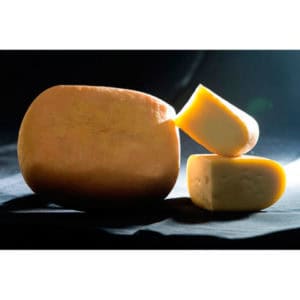
We will just keep rolling with the raw milk Spanish cheeses for now! Now from the island of Menorca comes Quintana Mahon DO, a semi-hard cow’s milk cheese whose production dates back to the Roman times and has always been an important industry for the people and farmers of the island.
The traditional method of pressing and molding the cheese by hand in a fogasser– Catalan for “cloth”–separates the cheese curds from the whey. Paprika is rubbed onto the rind for the aging process. The effect of the traditional handcrafting is a slightly acidic and pleasantly salty flavor with a bit of spice from the paprika. Oh, yes, and it was the winner of the 2013 “Best Artisanal Cheese of the Year” awarded by Regulatory Board of DOP.
Ok, I told you Spain has a lot of great cheeses! And so does Italy, which we will get to momentarily. But first, two more Spanish gems.
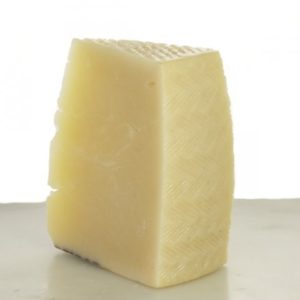
From Central Spain’s region of Castilla la Mancha comes another award-winning cheese: Pasamontes Manchego won the 2012 Gold Medal for Manchego Artesano DOP Semicurado. Spain’s legendary Manchego is truly done justice by Pasamontes who has made their cheese in the same location since 1876. The raw milk preserves the subtle and delicate flavors of the milk from the Manchego sheep. And with no chemical wash on the rind it is truly natural and edible. The rind is great to cook with, although the texture might be a little rough for direct consumption. It is available 3-4 months aged as well as 1-year aged. Manchego is a widely recognized cheese by the U.S. consumer; however, what is often available in the U.S. is a more commercial version than what Spanish natives enjoy with family!
Hailing from the Asturias region of Spain and producer Queseria Artesanal de Pravia, Rey Silo is the revived afuega’l pitu cheese almost lost to history! This raw cow’s milk cheese is aged for at least two months in an underground cellar on the banks of the Nalon River in Pravia, Asturias.
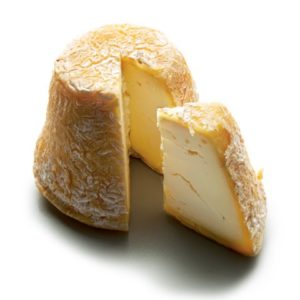
The cheese is hand-salted and turned daily to ensure even conditions throughout. The natural rind is formed by the geotrichum culture which gives the surface a wrinkled look affectionately called “toad’s skin” by the local people. That’s a cool look! And how about the taste? Rey Silo Blanco holds intense flavors of wildflowers and fresh milk with hints of hazelnut and butter. The paste is a perfect mix of creamy yet dry. As Rojo suggests, it holds a reddish hue, a result of adding the finest pimento from Spain’s Extremadura region. The touch of spice is traditionally thought to “energize” the workers of the mining region around the Aramo mountain range in Central Asturias.
Now, Viva Italia!
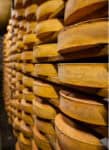
Who doesn’t love Fontina? Bordered by France and Switzerland, the Valle d’ Aosta region of Northwest Italy is home to Fontina Vallet Pietro. This compact and springy cow’s milk cheese is perfect for the regional dish fonduta–a staple in the alpine skiers’ diet! The cows graze only on fresh grass and this fact, paired with the lack of high heat during production, results in a cheese with natural enzymes and subtle flavors. So get your fonduta on with this perfect melting cheese!
And who could survive without Parmigiano Reggiano? Producer Valserena makes this classic cheese solely from the milk of Brown cows (Sola Bruna). In fact, Valserena is one of only four dairies belonging to Consorzio di Sola Bruna which guarantees the Parmigiano Reggiano is made using only milk from registered Brown Cows. This breed is prized for the flavorful, rich milk that result in the unique characteristics of the cheese.
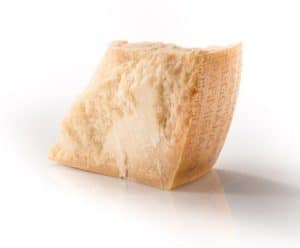
Following traditional methods of production, Gian Domenico Serra and his children, Giovanni, Antonietta and Niccolo, manage the Valserena dairy. Valserena is a rare, family-run farmstead where the family is in control of the farming, the methods of cheese making and the aging process. The cows’ diet is rotated every five years to include wheat, corn, alfalfa, and sugar beets. The rotation–along with 24 months of aging and many other traditional production methods–creates nuances in the flavor of the milk. And the efforts produce a sweet and delicate Parmigiano Reggiano with a golden-yellow paste.
Next up is MonnaLisa Pecorino Trebbione by SALCIS. SALCIS is an acronym for Societa Anonima Lavorazione Carni Insaccati Siena. The society was founded in 1941 during World War II as a way to unify all the Tuscan Salami producers in the area of Siena. And in 1960, SALCIS began its own sheep dairy and ventured into the world of Pecorino cheese production! We offer three SALCIS Pecorinos, one of which is the raw sheep’s milk Pecorino Trebbione.
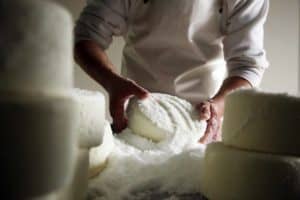
This cheese is made using only sheep milk from herds in the countryside of Crete Senesi area. Furthermore, only milk from certain times of the sheep’s lactation is used in order to achieve the desired full and robust flavor of the Trebbione. But there are still variations and nuances to the cheese depending on the pasture and sheep’s diet. This cheese has a strong personality! The rind is solid, marked by holes of the natural fermentation. It is hay-colored and in fact is covered in hay as it matures. So pour a nice glass of full-bodied red wine, like Brunello di Montalcino, and enjoy!
I could sit here and write about these cheeses all day! But, again, for more information on all of our cheeses, please visit the link at the top of this post.
Rogers Collection is proud and eager to share this group of raw milk cheeses with you.
Get ready to slice, crumble, melt, dip, scrape, nibble and generally have an all-around extraordinary cheese experience!
Written by Leska Tomash